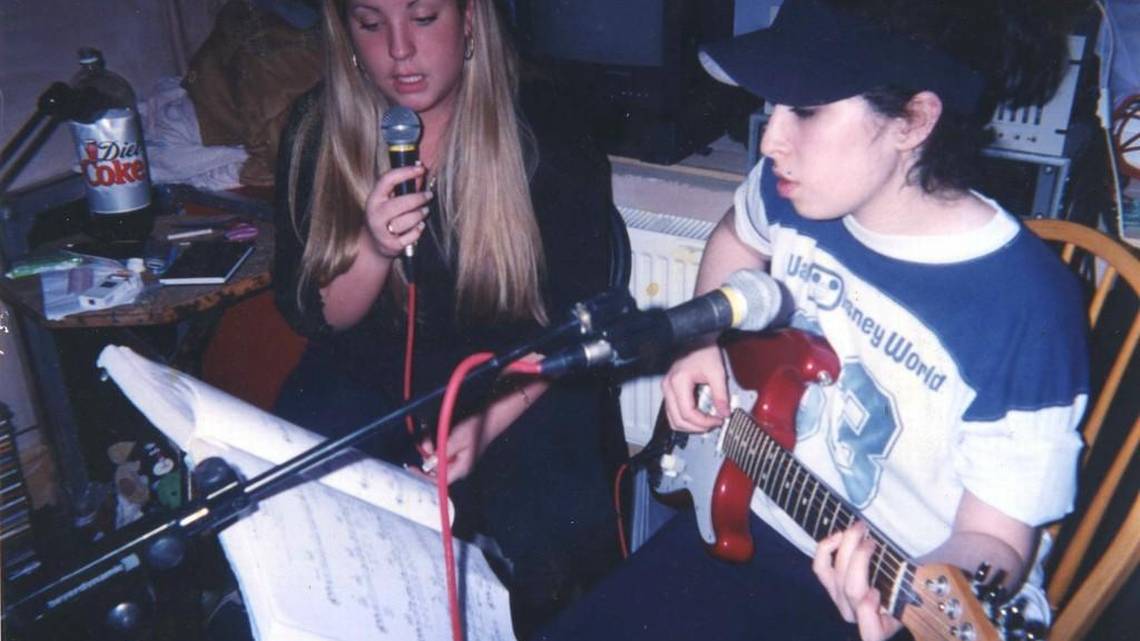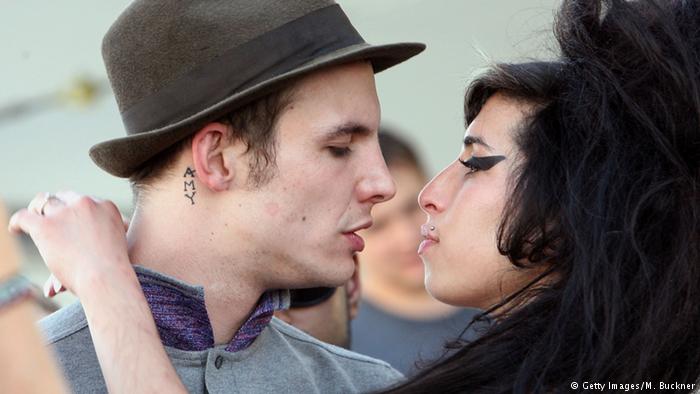Seven years ago, Amy Winehouse’s life and career were tragically cut short when she died of alcohol poisoning in her apartment in London. On July 23, 2011, she joined Jimi Hendrix, Janis Joplin, Jim Morrison, and Kurt Cobain as a member of the 27 Club.
Amy always had trouble in school and was considered a rebel by her teacher. This was due to the fact that the daughter of a taxi driver and a pharmacist only wanted one thing in life: to perform at the stage. School subjects never interested her, apart from music.

Photo: Amy/A24 Productions
When she was 12, Amy attended the prestigious Sylvia Young Theater School. In her application, the young girl from Southgate suburbs of London said: “I would say that my school life and school reports are filled with ‘could do betters’ and ‘does not work to her full potential.’ I want to go somewhere where I am stretched right to my limits and perhaps even beyond. To sing in lessons without being told to shut up … But mostly I have this dream to be very famous. To work on stage. It’s a lifelong ambition. I want people to hear my voice and just…forget their troubles for five minutes.”
Sylvia Young, the headmistress of the school, was blown away by her talent and have this to say about Amy “It is hard to overstate just how much she struck me as unique, both as a composer and performer, from the moment she first came through the doors at the age of 13, sporting the same distinctive hairstyle that she has now. Her abilities could put her in the same league as Judy Garland or Ella Fitzgerald. She could be one of the greats.”

Photo: Amy/A24 Productions
At the age of 19, Amy Winehouse signed her first record deal. Her debut album, titled Frank, was released in 2004 and reached number 3 on the British chart. Described as a white woman with a black voice, she was instantly popular with both critics and fans. Clad in 1960’s fashion, she began touring, holding concerts in sold-out venues. Ironically, the more successful she was, the more she feared to perform at the stage, the one thing she always wanted to do. As pressure mounted, Amy sought solace in alcohol.
During one of her benders, she met Blake Fielder-Civil. She fell in love with him, perhaps finding a soul mate in his heroin-addicted personality. Together, they continued with alcohol and drug abuse, until he left her a few months later. The break up left Amy devastated. She poured her pain in the next album, Back to Black, which brought her five Grammys. The song Rehab was a mega-hit, describing her father and her manager’s efforts to get her to rehabilitation.

Photo: Amy/A24 Productions
Blake Fielder-Civil returned to her life in 2009. They got married, but it only lasted for two years. The divorce pushed her off into the deep end and her career started to suffer. She appeared drunk on concerts, often falling and slurring her words. The fans started booing her and several of the concerts were cut short. On Jun 18, she performed at the Belgrade’s Tuborg Festival, in front of 20,000 people. DJ Mobi, who was scheduled to appear after her, described the event: “The moment I got out of the car, I knew something was wrong,” he told The Hollywood Reporter a few days later. “From backstage, I could hear the audience booing louder than the music. Amy was just standing there, swaying back and forth and mumbling occasionally. The band was playing quietly and looking uncomfortable and the audience was looking on in disbelief. She was on stage for about 30 minutes, then she left and was lying down on a flight case backstage surrounded by some people,” Moby recalls. “I was horrified.”
After Belgrade, the rest of the European tour was canceled. Amy flew back to London. She refused rehabilitation, despite her family and friends’ efforts. Five days later, her bodyguard found her dead in her apartment in Camden. The cause of death was alcohol poisoning. Perhaps the best epitaph was written by one of the London reporters: “She could bring songs to life like no other. But she was unable to live her own life.”
